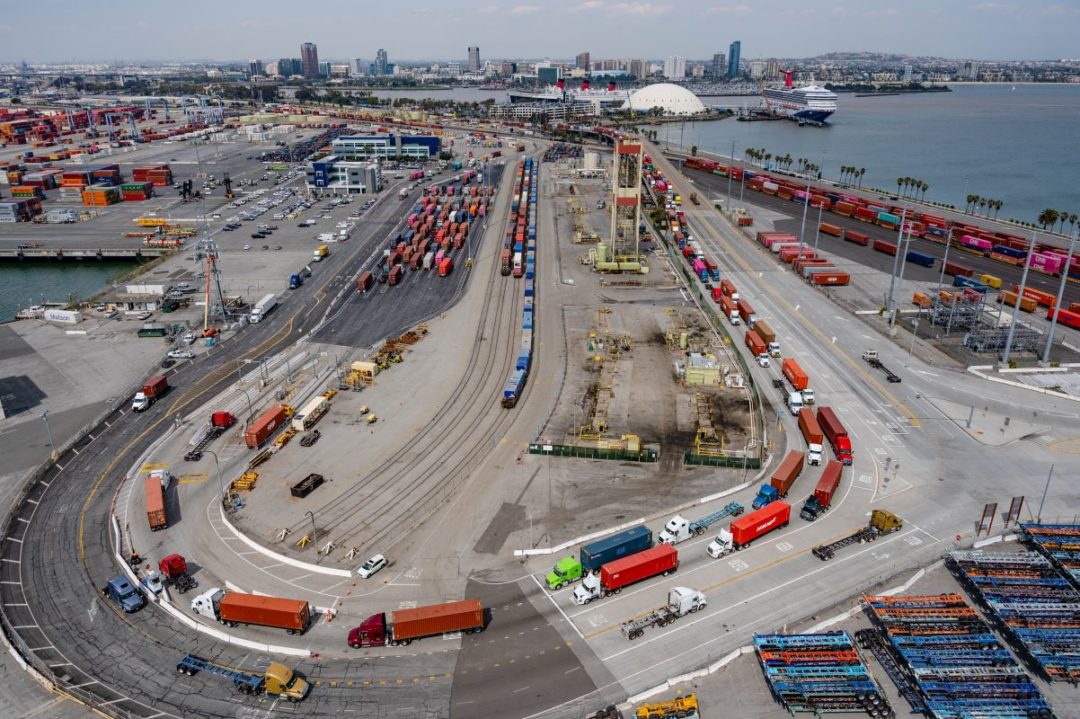
Visit Our Sponsors |
|
|
|
|
|
|
|
|
|
|
|
|
|
|
|
|
|
|
|
|
|
|
|
|
|
|
|
|
|
|
|
|
|
|
|
|
|
|

Technology could alleviate truck backups at ports. Photo: PortPro
The drayage industry is at a crossroads in terms of adopting technology, in particular with the aim of laying groundwork for a congestion-free and sustainable future, according to drayage software provider PortPro.
While growth-minded drayage carriers are embracing technology to digitize operations and improve efficiency and services, they are hindered by manually based systems, PortPro's recent report argues.
Even with a rudimentary grasp of digital technology, it’s often not enough, and trucking companies are not generally on the cutting edge of the latest systems. For example, you can make the necessary appointment for truck pickup or drop-off at any one of the 12 terminals at the ports of Los Angeles and Long Beach via a website — different for each terminal. The preferred option is to consolidate those processes into a single system, but it’s a tough sell, says PortPro chief customer officer Toni Ann Careccio.
“Drayage is a very low-margin business, so there’s not always the excess capital to spend on systems,” says Careccio. “But this is the way the industry is going.”
Another barrier, Careccio says, is that people in trucking have been doing the same thing the same way for a long time, so getting them to commit to new technology is a little bit of a challenge. “They’re set in their ways. Drivers worried they’ll get ‘trapped,’” she says.
But change is necessary, says Careccio, who in September was recognized as a top 2023 Woman in Supply Chain by Supply & Demand Chain Executive and Food Logistics.
“Amazon has set a precedent of visibility and instant delivery. Companies are beginning to expect their trucking companies to give them that same level of visibility and connectivity,” Careccio says. “If you don’t go this way, essentially you’re going to get put out of business, because other companies are making those investments and those changes.”
The report, “2023 State of Drayage First Mile in Logistics: Challenges and Future Growth,” calls for increased investments to strengthen the infrastructure of the entire port ecosystem, including improvements to bridges, new equipment, larger vessels, overall operation expansion, new technologies and more employees.
The report says a sustainable future is top of mind in the drayage industry, but that adoption of “green” technology and operational tactics is slow. In particular, carriers share concerns for building infrastructure to support e-fleets and other AI opportunities, on the road and in warehouses.
The U.S. drayage market is poised to grow from $6.1 billion in 2022 to $8.3 billion by 2027, the PortPro report notes. Primary growth drivers come from a global increase in consumer demand for e-commerce. Areas to keep an eye on for future growth include electronics, food and beverage, autos, chemicals, oil and gas, and pharmaceuticals.
RELATED CONTENT
RELATED VIDEOS
Timely, incisive articles delivered directly to your inbox.

